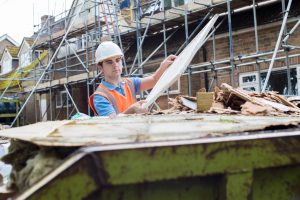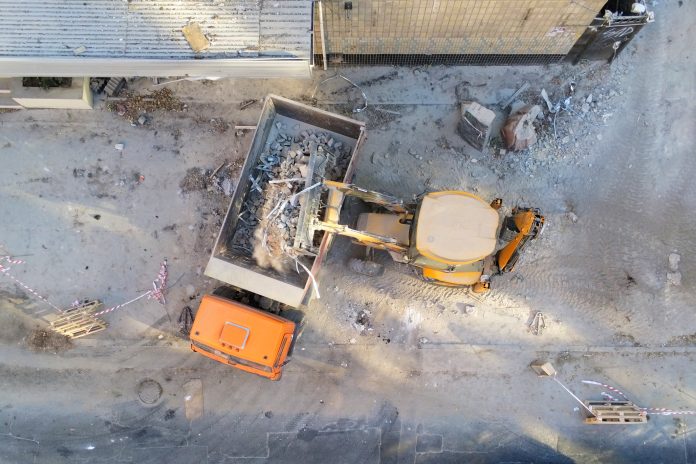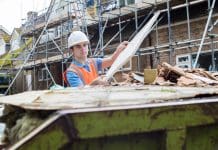With the UK 2050 net zero target in mind, it is time to think and talk more about reducing construction waste, says Irina Leigh, production innovation architect at L&Q
In discussions about the energy crisis, the spectre of climate change looms large. As housing providers scramble to deliver on their net zero promises, we are all thinking about what we can do to reduce emissions in our individual roles.
An area which is of note, and one which L&Q’s sustainability strategy is starting to address, is reducing construction waste.
Often overlooked in our industry, minimising waste not only reduces our environmental impact but also supports our housebuilding efforts and helps us save money too. During a housing crisis, and with the challenge of building safety remedial works thrown into the mix, the benefits of this cannot be overstated.
25-year Environmental Plan
The government’s 25-Year Environment Plan, published in 2018, pledged to “leave the environment in a better condition for the next generation”. The plan is a compelling read for many reasons, not least because of the references it makes to the natural capital approach. This includes seeing the natural environment (with its ecosystems, freshwater, land and forests) as an asset and contributor to the overall economy. But what makes it of particular relevance for our industry is the overarching target to eliminate avoidable waste of all kinds by 2050, and all avoidable plastic by 2042.
Aside from the laudable ambition underpinning this, the reason why this target is so important is because of the scale of the task at hand. According to the Department for Environment, Food & Rural Affairs, construction, demolition and excavation is the largest contributing sector to the total waste volume in the UK. In 2016, it generated 120.3m tonnes of waste, accounting for almost two-thirds (64%) of the total amount of waste recorded.
Reducing construction waste with SmartWaste 
At L&Q, we are working hard to reduce construction waste through our new project with BRE, the world’s leading, multidisciplinary building science organisation. Using their data collection tool, SmartWaste, we are gaining a deeper understanding of the amount of waste generated at our sites, identifying and rectifying problem areas, managing compliance with regulations and setting targets for systematically reducing waste. SmartWaste’s existing projects have produced interesting results so far, but more need to be registered to build a complete picture and have a greater impact.
All of this begs the question – what counts as avoidable, and unavoidable, waste?
The Construction Leadership Council offers a useful definition: “materials, products or components that can be prevented from becoming waste, in line with the waste hierarchy”. The Waste Hierarchy was introduced as part of the Waste Regulations for England & Wales in 2011 and ranks options for waste management according to what is best for the environment and for the circular economy. The most preferred option is to prevent waste, and the least preferred choice is disposal in landfill sites.
Using this as a basis, a significant proportion of construction waste can be classed as “avoidable” for both new and existing homes alike. For new builds, we need to focus on designing out waste from the early stages of the design process through to completion. This would include all scenarios where it is possible to design for better resource efficiency, deconstruction, and disassembly, and use efficient manufacturing processes and extended lifecycles. When dealing with existing buildings, reducing construction waste means prioritising reuse and retrofit where possible, and reinvesting in existing stock.
Many housing providers are already on the road towards reducing construction waste, most notably through the adoption of Modern Methods of Construction (MMC). L&Q is fast becoming a sector leader for MMC, utilising new approaches across our pipeline including trialling offsite methods through the Innovate UK-funded AIMCH project (Advanced Industrialised Methods for the Construction of Homes), while implementing robust site measures to ensure the quality of our homes. Alongside this project, our Production Innovation Team has also been developing L&Q-specific housing blueprints for bringing high-quality, sustainable homes to market quickly and cost-effectively. We’ll be using standard house type pattern books on our own sites, transforming how affordable homes are delivered by increasing design, material and resource efficiency.
We’ve come a long way from the pre-net zero era, yet more can still be achieved with greater awareness of the issues and solutions at hand. With the UK government’s 2050 net zero target in mind, it is time to think and talk more about waste, designing it out where possible, using technologies at our disposal and utilising resources responsibly.

Irina Leigh
Production innovation architect
Tel: +44 (0)20 8189 9998








![[VIDEO] Making DorTrak reports easy to read with Fireco Inspecting fire doors at Fireco, firedoor technology, 2023](https://www.pbctoday.co.uk/news/wp-content/uploads/2024/04/JPZ_2364-web-218x150.jpg)
![[VIDEO] Re-flow Field Management review by Traffic Management Installations When TMI began subcontracting for councils and government bodies, they wanted to present their site reporting in a more professional manner](https://www.pbctoday.co.uk/news/wp-content/uploads/2025/03/TMI-Media-1-218x150.png)




